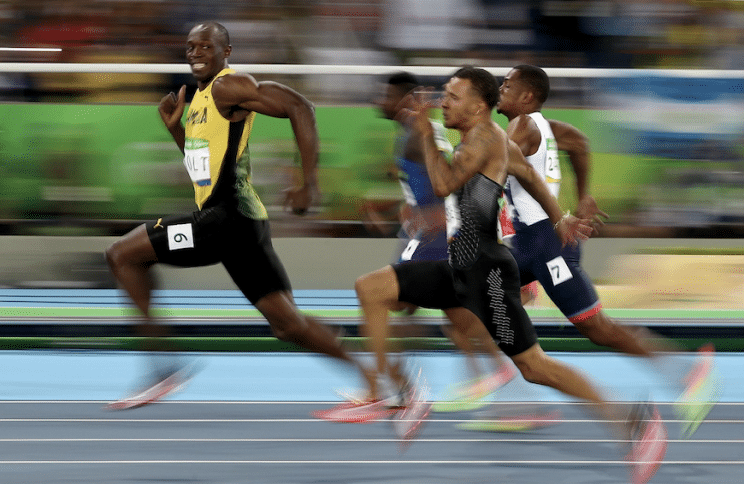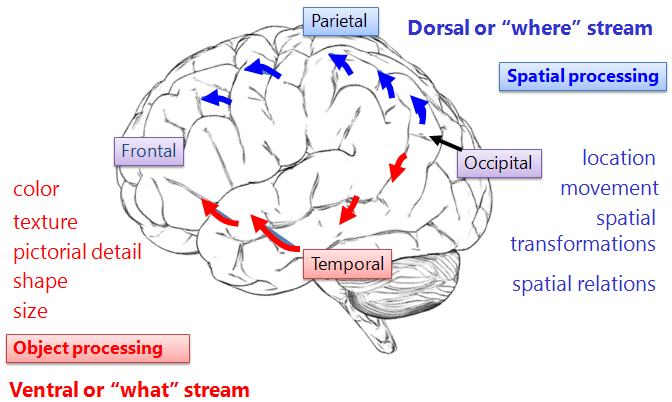Humans are visual creatures — we’re hardwired that way. We love seeing things, we’ve mastered recognizing objects, and we use images as a cornerstone of both our memory and the way we process the world around us.

The web, meanwhile, is trying to catch up to our propensity for all things visual. The gap between the way that humans process information and the way that the web relies on text to process information is slowly closing. Images are the web’s future because they’re at the forefront of how we see and conceive the world and the information in it.
But you don’t have to take our word for it. The science is in and the trends are clear: The digital future is visual.
You’ll Know It When You See It: How We’re Hardwired to Be Visual
Forget five senses—we have about 20. But one stands out above all others: vision.
We truly are visual creatures. Our brains can identify and categorize images in as few as 13 milliseconds. The more familiar an object is, the quicker we recall it. Sure, this was probably a huge help when we were avoiding predators in the wild, but it’s just as relevant today. If you’re a parent, you can quickly spot your kid in the school pickup line. If you are a consumer searching for a pair of orange sneakers, you can flick through options and quickly find what you want.
 Your visual identification is even faster than Usain Bolt, according to science. | Source
Your visual identification is even faster than Usain Bolt, according to science. | Source
This is all because significant portions of the brain are involved in processing visual information. Some portions are completely dedicated areas, like the visual cortices. Other areas, such as the temporal lobe, allow you to combine this information with memory and other senses before sending signals to the decision-making parts of your brain, such as the prefrontal cortex. It’s here that you decide whether you want these sneakers or those sneakers.
From the photons hitting your retina to you making a conscious decision takes only a few hundred milliseconds. This happens literally in the blink of an eye.
 Every image you see is processed for color, size, shape, location, movement, and many more traits. | Source
Every image you see is processed for color, size, shape, location, movement, and many more traits. | Source
Another reason sight and image processing is integral to many humans’ existence is that our visual recall is resilient. That is, we can recognize objects under a variety of different conditions with relatively little information. We’d recognize a mug in a color photo. If the photo were in black and white—still no problem. If the image is distorted, or part of the object isn’t visible, we still have a good chance of identifying a mug.
Even in the fourth image, you know a mug is there.
That might seem inconsequential, but it shows that what our brains are doing when we see images is more than just processing what’s in front of us. It’s a much more complex process that involves memory, inference, and contextual perception. In other words, our ability to identify images is incredibly robust.
Along with this mastery of identification, visuals are also integral to memory and understanding. One place this has been well studied is the classroom. Students given visuals to go along with lectures have been shown to have better retention than students listening to lectures without visual aids. Why does this matter outside the classroom?
Let’s say you’re shopping for a couch. You might look at 15 or 20 options, trying to find something that fits your needs. Would you be more likely to remember those options if you had only text descriptions of those couches, or would it be easier if you had images to go along with each description? Spoiler alert: The pictures help.
Digital Life Is No Longer Text-Based
Given most people’s high reliance on image processing to navigate the world, it’s no surprise that the digital world is becoming more and more visual. This spans the entire digital spectrum, from social media all the way to VR and AR.
Take the recent shift of users away from Facebook and toward Instagram. Yes, Facebook owns Instagram, but the point here isn’t about who is getting the business, it’s about what users are experiencing in-app. There are many reasons why people might make Instagram their primary form of social media, but the highly visual nature of the platform is undeniably appealing.
And let’s not forget that before Instagram copied all of its features, Snapchat — a highly visual medium — was poised to be the biggest threat to Facebook’s social dominance.
But we all know how that ended up. Facebook turned Instagram into a huge asset, and they made Facebook and Messenger more visual as well. Facebook newsfeeds started featuring way more videos, and Messenger is becoming more and more visual, from a video call function to better image functionality for bots.
As our digital experience has evolved, we’ve all become more likely to share images as a part of our interactions, as well. Memes, a staple of internet culture, are highly visual. When a meme has saturated the web, it’s not uncommon to see the image without any text overlay, a symbol in and of itself.
 No text needed. | Source
No text needed. | Source
Images are also used as reactions in two other extremely popular forms: emojis and gif reactions. Emojis are so popular, in fact, that the addition and upgrades of emojis are real news. Gif reactions are so popular that sites like Twitter and Facebook’s Messenger have added specific gif search functions to more easily add gifs to messages.
Media and branded content have also evolved on the web. The much-maligned “pivot to video” was evidence of what we knew all along: People prefer to watch things and see pretty images rather than be flooded with walls of text. That’s true whether or not platforms deemphasize video and whether or not a brand’s video content works as advertising.
Online publications have taken notice as well. Gone are the days of a text article with a small photo on the side. Now, publications are using visuals in a variety of ways to enhance stories.
One way they do this is with a banner image, which has become a staple of feature pieces. You’re scrolling through a feature story, and all of a sudden:

 An animated map of Antarctica appears as you scroll through the New Yorker story. (The White Darkness)
An animated map of Antarctica appears as you scroll through the New Yorker story. (The White Darkness)
Other times, visualizations become the story. Take this piece from the New York Times, which is essentially a slide show of visual information, with text annotations.
 It’s evident that visuals are enhancing our digital experiences more and more. As it became easy to insert pictures, emojis, and gifs, people latched onto them. As streaming got faster and digital cameras became ubiquitous, video sites, apps, and ads exploded. In other words, when we had the ability to make things visual, we did it without a moment’s hesitation.
It’s evident that visuals are enhancing our digital experiences more and more. As it became easy to insert pictures, emojis, and gifs, people latched onto them. As streaming got faster and digital cameras became ubiquitous, video sites, apps, and ads exploded. In other words, when we had the ability to make things visual, we did it without a moment’s hesitation.
Digital + Visual Is a Match Made in Our Brains
Though there have been a lot of visual advancements for the web, we haven’t reached the final frontier of visual digital experience. This is most obvious when searching for something.
Search queries are still, by and large, completely dependent on words or preset filters. So, say you’re trying to shop for a pair of orange sneakers. You might know what they look like, you might be able to picture them in your mind, you might even have a picture of a similar pair, and yet you’re stuck searching “women’s sneaker orange.”
When that doesn’t get you what you want, you might start adding random descriptors in hopes of hitting on the same descriptive phrases that are present on a website:
- Women’s sneaker orange low top
- Women’s sneaker orange white soles
- Women’s sneaker bright orange neon
And that still might not do it. Although we get lucky sometimes, there’s an inherent fallibility in asking people to guess how companies describe an item, and then trying to mash those things together to find the desired item.
So why not skip the part where everyone has to take images and make them into words? Why not just rely on the images? If humans are visual creatures—and they are—and the web is now ready to be dominated by images, widespread digital searches will turn to images. And that will revolutionize the way we try to find what we’re looking for.
Say you searched for that pair of sneakers with Syte.ai by uploading a pair of orange sneakers that had the look you were going for:


Maybe someone saved an image while browsing online a few weeks ago. Maybe they saw a celebrity wearing the shoe. Maybe they snapped a photo while browsing in-store but needed more time to make a purchase. Maybe they found a similar shoe but it wasn’t quite right. Now, they come to your site and, boom—they have a boatload of shoes to choose from: the white sole, the low top, the right shade of orange. And they found them without having to guess those terms.
In other words, with a visual search, what consumers want to see is what they get. You can take advantage of this by adding a visual search camera button to your website.

Sure, people will still be able to search by category and color, but they’ll also be able to use a visual shortcut when they know exactly what they want. No sorting through things that don’t quite match, no trying to figure out which combination of category, color, and search term will get them what they want.
Visuals Are the Beginning and the End
For both the consumer and all manufacturers involved in web experiences, categorizing and recalling information is one of the key problems we’re still trying to solve. As humans, we’re hardwired to perceive the world visually before we can talk or understand language or identify smells or recognize tastes. That’s a core way in which we understand, process, and recall information in our heads, so applying that idea to our digital experience is going to open up what we’re doing digitally.
Consumption, media, social platforms, and everything else that’s asking us to communicate—to humans or to machine processes—can and will become more visual. It’s already happening, and it’s time to embrace it.